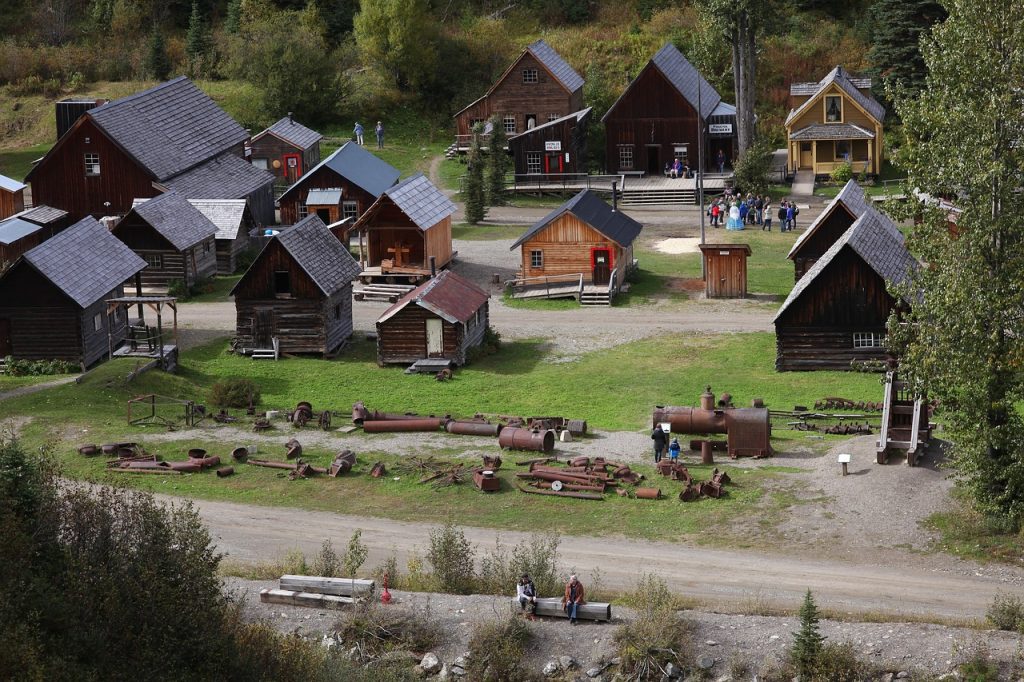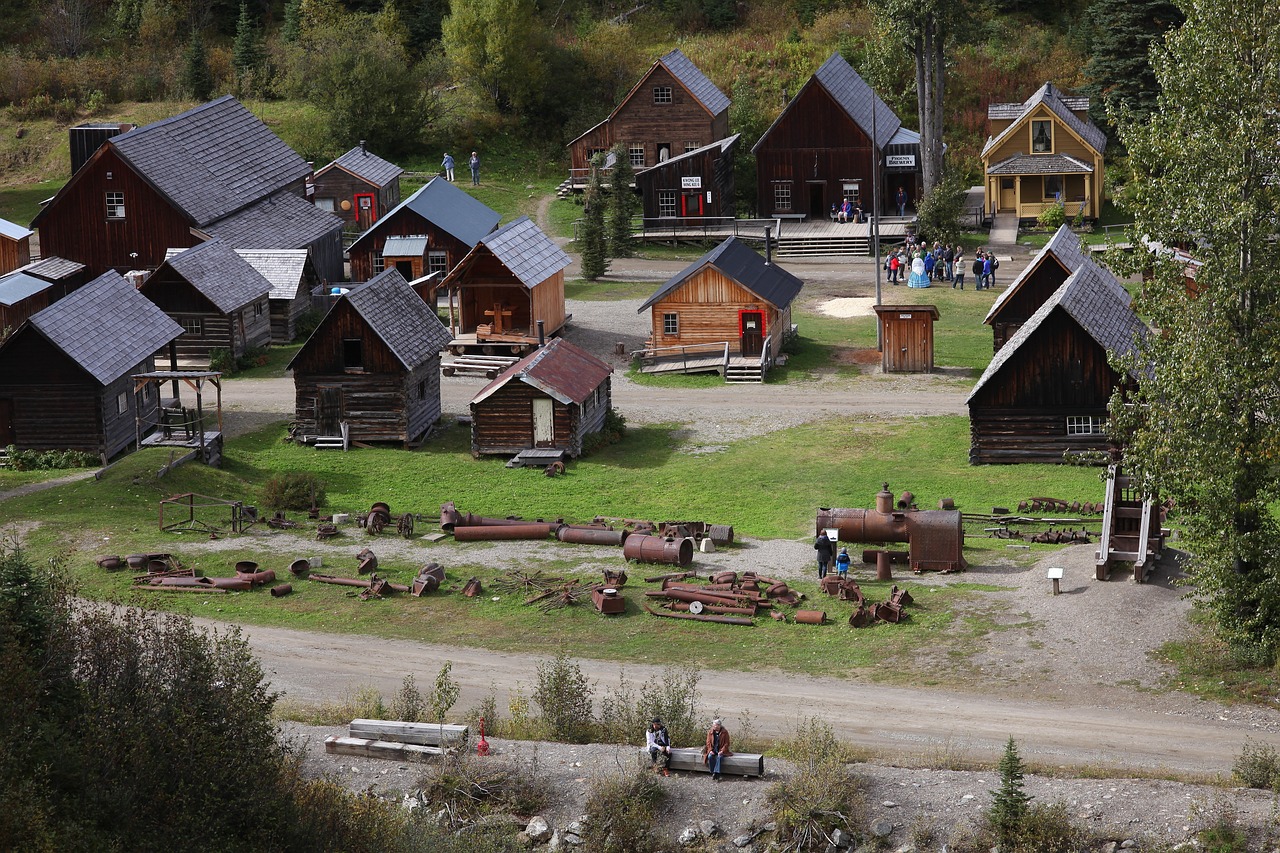So you want to know about famous gold rushes and how they impacted the price of gold? Well, let me tell you, these historical events have certainly left their mark on the shiny metal. From the California Gold Rush in the 1800s to the Klondike Gold Rush and the Witwatersrand Gold Rush, each boom in gold mining had a significant impact on the price of gold. It’s fascinating to see how these rushes created an influx of supply, influencing the market dynamics and ultimately shaping the price we see today. So, buckle up and get ready for a journey through time as we delve into the world of famous gold rushes and their remarkable effect on the price of gold.

This image is property of pixabay.com.
California Gold Rush
In the mid-19th century, the discovery of gold in California had a profound impact on the global price of gold. The California Gold Rush began on January 24, 1848, when James W. Marshall discovered gold at Sutter’s Mill in Coloma, California. News of the discovery quickly spread, attracting a massive influx of miners from all over the world, hoping to strike it rich.
The economic boom that followed the discovery of gold in California led to a surge in inflation. With an influx of people seeking their fortune, prices for goods and services skyrocketed. The demand for goods and labor far exceeded supply, causing inflation to soar. As a result, the cost of living in California during the Gold Rush era was exceptionally high.
The impact of the California Gold Rush on the global price of gold was also significant. As gold poured in from California, the supply of gold increased dramatically. This sudden increase in supply led to a decrease in the value of gold, as the market became flooded with the precious metal. The increase in supply also had a secondary effect, as more gold became available for use in manufacturing and jewelry, further impacting the global gold market.
The long-term effects of the California Gold Rush on gold prices were more complex. While the initial influx of gold from California had a deflationary effect on gold prices, the sustained production of gold from the region eventually led to a steady increase in the global supply of gold. This steady supply, coupled with growing industrial demand, resulted in a gradual increase in gold prices over time. The California Gold Rush laid the foundation for the modern gold market, shaping the dynamics of supply and demand that continue to influence gold prices to this day.
Klondike Gold Rush
The Klondike Gold Rush, which occurred between 1896 and 1899, was one of the largest gold rushes in history. It was sparked by the discovery of gold in Bonanza Creek, a tributary of the Klondike River in the Yukon Territory, Canada. The news of this discovery spread like wildfire, attracting prospectors from all over the world to the remote wilderness of the Canadian North.
The influx of prospectors during the Klondike Gold Rush had a significant impact on the local economy. The population of the Yukon Territory exploded practically overnight, with thousands of people flocking to the region in search of gold. This sudden population growth led to the development of towns and infrastructure to support the growing number of miners. Businesses boomed, supplying miners with equipment, food, and other necessities. The local economy experienced an unprecedented period of growth and prosperity.
The gold output from the Klondike region had a considerable influence on the international gold market. As gold poured out of the Yukon, the global supply of gold increased. This increased supply had a dampening effect on gold prices, driving them downward. However, the impact on gold prices was relatively short-lived, as the Klondike gold rush was relatively short-lived as well. Once the easily accessible gold was exhausted, the rush subsided, and the supply of gold returned to normal levels, stabilizing prices.
The price fluctuations during the Klondike Gold Rush were reflective of the boom and bust nature of gold rushes. As the rush began and gold output surged, prices experienced a downward pressure due to the increased supply. However, once the initial excitement waned and the rush dwindled, prices stabilized, reflecting the return to a more balanced market.

This image is property of pixabay.com.
Victorian Gold Rush
The Victorian Gold Rush, which began in 1851 in Victoria, Australia, was pivotal in shaping the economic and social landscape of the region. The discovery of gold in the state attracted a significant number of prospectors, both from within Australia and from overseas. This influx of people seeking their fortune had a profound impact on the population and economy of Victoria.
The gold discovery in Victoria led to a period of unprecedented population growth and economic expansion. The news of gold spread rapidly, and people from all walks of life flocked to Victoria in search of riches. The influx of migrants, known as the “diggers,” helped to transform Victoria into a thriving colony, with new towns springing up to accommodate the growing population. The economic prosperity fueled by gold mining led to the development of various industries and stimulated infrastructure projects.
The increased gold supply resulting from the Victorian Gold Rush did have an impact on gold prices. As more gold entered the market, the supply of gold increased, putting downward pressure on prices. However, the prolonged nature of the Victorian Gold Rush ensured that the impact on gold prices was not as abrupt or drastic as in some other gold rushes. The steady, sustained production of gold in Victoria, coupled with surges in gold output during peak years, contributed to a gradual decrease in gold prices over time.
The legacy of the Victorian Gold Rush is undeniable. It transformed Victoria from a rural backwater into one of the wealthiest and most populous colonies of the British Empire. The wealth generated from gold mining laid the foundation for Victoria’s ongoing economic prosperity and continues to shape the region today. The cultural and historical significance of the Victorian Gold Rush is also evident in the numerous heritage-listed sites and museums that celebrate this transformative period in Australian history.
Witwatersrand Gold Rush
The Witwatersrand Gold Rush, which began in 1886, was a pivotal event in South Africa’s history. The discovery of gold in the Witwatersrand Basin, located in what is now Gauteng Province, sparked a massive influx of prospectors into the area. The Witwatersrand Gold Rush had a profound impact on the mining industry, the economy, and the international gold market.
The discovery of gold in the Witwatersrand Basin led to a rapid growth of the mining industry in South Africa. The area became the world’s largest gold producer, with countless mines springing up to extract the precious metal. The growth of the mining industry fueled economic development, attracting investments and infrastructure development. The population in the region exploded, as people from all over the world came to seek their fortune.
The influence of the Witwatersrand Gold Rush on the South African economy cannot be overstated. The gold mines created job opportunities and spurred industrial growth in various sectors. The revenue generated from gold mining contributed significantly to the overall wealth of the country. The mining industry became the backbone of the South African economy, ensuring its prominence in the international gold market.
The impact of the Witwatersrand Gold Rush on the international gold market was substantial. The mining industry in South Africa became the world’s largest producer, leading to a surge in the global supply of gold. This increased supply had a deflationary effect on gold prices, driving them downward. However, the sustained production of gold from the Witwatersrand Basin eventually led to a greater demand for gold, stabilizing prices in the long term.
The Witwatersrand Gold Rush forever changed the landscape of South Africa. The economic and industrial development spurred by the mining industry continues to shape the country to this day. Additionally, the rich history of gold mining in South Africa and the cultural significance of the Witwatersrand Gold Rush are commemorated through various museums and heritage sites, showcasing the impact of this historic event.

This image is property of pixabay.com.
Alaska Gold Rush
The Alaska Gold Rush, which started in 1880, had a profound impact on the development of the state and the global gold market. The discovery of gold in the remote wilderness of Alaska attracted a considerable number of miners, eager to capitalize on the newfound wealth.
The gold discovery in Alaska sparked a wave of migration and economic growth in the region. News of gold spread rapidly, drawing prospectors from all over the world to this rugged frontier. The population of Alaska exploded, leading to the establishment of towns and communities to accommodate the influx of miners. The economic growth resulting from gold mining had a multiplier effect, creating demand for various goods and services.
The gold output from Alaska during the gold rush had a significant influence on gold prices. As the supply of gold increased, prices experienced downward pressure due to the surplus of the precious metal in the market. The increased gold output from Alaska also impacted the global gold market, contributing to a decrease in gold prices overall.
In the short term, the Alaska Gold Rush had a noticeable effect on the gold market. However, as the easily accessible gold was depleted, production declined, and the supply of gold returned to normal levels. This stabilization in supply eventually led to a recovery in gold prices, highlighting the temporary nature of the impact.
The long-term effects of the Alaska Gold Rush on the gold market were more nuanced. While the rush itself did not have a lasting impact on gold prices, the development of mining infrastructure and the discovery of new deposits set the stage for ongoing gold production in Alaska. The state continues to be a significant gold producer, contributing to the global supply and influencing gold prices in the long term.
Colorado Gold Rush
The Colorado Gold Rush, which started in 1858, played a significant role in the development of Colorado and the impact on the gold market. The discovery of gold in the region attracted a massive influx of people hoping to strike it rich, transforming the area into a bustling frontier.
The gold discovery in Colorado led to a population influx and an economic boost. News spread quickly, drawing thousands of prospectors to the area in search of gold. The population exploded, leading to the establishment of mining camps and towns to accommodate the growing number of miners. The economic activity generated by gold mining stimulated business growth in various industries, from supply chains to services.
The gold extraction during the Colorado Gold Rush had implications for gold prices. As the supply of gold increased, prices experienced downward pressure due to the surplus in the market. The increased gold production from Colorado influenced the global gold market, contributing to a decrease in gold prices overall.
The local and global impact of the Colorado Gold Rush was substantial. Locally, it spurred the rapid growth and development of Colorado, transforming it from a sparsely populated territory to a prosperous state. The economic activity generated by gold mining provided the financial foundation for the state’s ongoing growth and development.
Globally, the Colorado Gold Rush added to the overall supply of gold, creating downward pressure on prices. However, as other gold rushes, the impact was temporary, given the limited scope and duration of the rush. Once the easily reachable gold deposits were depleted, production declined, and gold prices stabilized.
Black Hills Gold Rush
The Black Hills Gold Rush, which began in 1874, had a substantial impact on the settlement and economic development of the region. The discovery of gold in the Black Hills of South Dakota attracted a large number of prospectors, transforming the area into a mining hub.
The discovery of gold in the Black Hills led to a surge in settlement and rapid economic development. Prospectors flocked to the region in search of gold, leading to the establishment of mining camps and towns. These settlements grew rapidly, spurred by the economic activity generated by gold mining. Businesses and services flourished, catering to the needs of the growing population.
The gold production during the Black Hills Gold Rush had an effect on the gold market. As the supply of gold increased, prices experienced downward pressure due to the surplus in the market. The increased gold output from the Black Hills impacted the global gold market, contributing to a decrease in gold prices overall.
The price changes during the Black Hills Gold Rush were reflective of the boom and bust nature of gold rushes. Initially, prices experienced a downward trend as gold output surged. However, as production declined after the easily accessible gold was extracted, prices stabilized, reflecting the return to a more balanced market.
The long-term significance of the Black Hills Gold Rush lies in the legacy it left in the region. The economic development and settlement spurred by the gold rush continue to shape the Black Hills area today. The history of gold mining in the region is preserved and celebrated through various museums and historical sites, offering a glimpse into the impact of this significant event.
Ballarat Gold Rush
The Ballarat Gold Rush, which began in 1851, transformed the region in Victoria, Australia, into a bustling center of economic prosperity. The discovery of gold in Ballarat attracted a significant number of prospectors, leading to population growth and economic success.
The gold discovery in Ballarat triggered a period of rapid population growth and economic prosperity. The news of gold spread quickly, attracting prospectors to the area in search of fortune. This influx of people led to the establishment of mining settlements and towns, stimulating economic activity. Local businesses thrived, supplying miners with equipment, food, and services.
The increased gold supply resulting from the Ballarat Gold Rush had an influence on gold prices. As more gold entered the market, the supply of gold increased, putting downward pressure on prices. However, the sustained production of gold in Ballarat ensured that the impact on gold prices was not as abrupt or drastic as some other gold rushes. Over time, gold prices gradually decreased, reflecting the steady supply of the precious metal.
The legacy and historical importance of the Ballarat Gold Rush are evident in the rich history and cultural heritage of the region. Ballarat, once a small rural locality, transformed into one of the largest inland cities in Australia due to the gold rush. Today, the city boasts numerous heritage sites and museums that celebrate its gold mining history, preserving the memory of this transformative period.
Nome Gold Rush
The Nome Gold Rush, which started in 1898, was a pivotal event in Alaska’s history and had a significant impact on the local economy and the gold market. The discovery of gold in Nome attracted a massive influx of miners, transforming the remote region into a bustling center of economic activity.
The gold discovery in Nome resulted in an influx of miners and had a substantial economic impact. Thousands of people flocked to the region, hoping to strike it rich. The population of Nome exploded, leading to the establishment of mining camps and boomtowns. The economic activity generated by gold mining stimulated business growth, creating a demand for supplies, services, and infrastructure.
The gold output from the Nome Gold Rush influenced the gold market, both locally and globally. As the supply of gold increased, prices experienced downward pressure due to the surplus in the market. The increased gold production from Nome had an impact on the global gold market, contributing to a decrease in gold prices overall.
The overall consequences of the Nome Gold Rush on the gold market were observable in the short term and to some extent in the long term. The surge in gold output resulted in a decrease in prices initially. However, as the easily accessible gold deposits were depleted and production declined, gold prices stabilized, reflecting a return to a more balanced market.
The enduring effects of the Nome Gold Rush on the global gold market are generally limited due to its relatively short duration. Nevertheless, the significance of the rush in Alaska’s history and the historical importance of Nome as a gold mining town remain a significant part of the region’s heritage.
Yukon Gold Rush
The Yukon Gold Rush, also known as the Klondike Gold Rush, began in the late 19th century and played a pivotal role in shaping the economic landscape of the region and its impact on the global gold market.
The gold discovery in the Yukon, Canada, triggered an economic boom and a rapid population growth. News of gold spread like wildfire, attracting prospectors from all over the world to the remote wilderness of the Canadian North. The influx of people seeking their fortune led to a surge in economic activity, with the establishment of towns and supporting infrastructure.
The gold output from the Yukon Gold Rush had a noticeable impact on gold prices. As more gold entered the market, the supply increased, resulting in downward pressure on gold prices. The increased production from the Yukon also had an influence on the global gold market, contributing to a decline in gold prices overall.
The enduring effects of the Yukon Gold Rush on the global gold market were significant but relatively short-lived. As the easily accessible gold in the region was exhausted, production declined, and gold prices stabilized. The rush served as a temporary surge in gold supply, resulting in a temporary decrease in prices.
However, the impact of the Yukon Gold Rush on the regional economy and the cultural landscape was profound. The rush forever shaped the Yukon, leaving behind a legacy in the form of towns, infrastructure, and cultural heritage. The historical significance of the Yukon Gold Rush is celebrated through museums, heritage sites, and the ongoing recognition of its importance in Canadian history.



